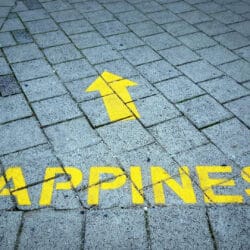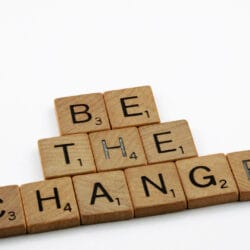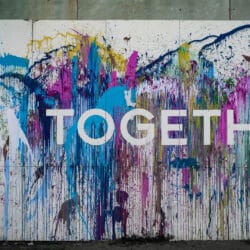‘We all fail, but it’s how we deal with fears and failure that separates those…
Creativity isn’t just about playful expression, its role towards our very development, outlook, and healthy self-esteem shouldn’t be underestimated. This article explains why.
Healthy self-esteem is something that every person wishes they possessed, but over 80% of people actually have pretty low self-esteem, whether it be a lack of self-confidence or an inflated ego which is essentially masking insecurities.
Whilst the reasons for developing low self-esteem are many, most direct back to cognitive nurturing within childhood.
Why Self-Esteem Is Often Low
It might be that someone didn’t develop trust healthily, or burdened shame or guilt due to not having the optimal development or nurturing. It could be that someone has an inferiority complex or has identity confusion. All of these contribute towards a low self-esteem and all of them weren’t really your fault either.
We develop blindly as children, unaware of the cognitive hammer blows we might be developing which we inherit as our cards to play with in the game of adult life.
Many of us found that the best way to play those cards weren’t by accepting and then focusing on overcoming these deficiencies but instead to subconsciously mask them, pretend we are okay as we jump into the scary world of fitting in (for our survival), and to build enough comfort around us to submerge any childhood fears or development deficiencies.
Then when something becomes challenging we would (again subconsciously) seek to inflate our protective ego some more (or we would crawl back into our shell some more).
Of course, neither are healthy, but the former at least means we find it slightly easier to still make it in the world, at least on the surface, so often those with low self-esteem might be externally confident but doubt seeks below the protective ego.
When coupled with those with who we tend to assume have low self-esteem – those with more obvious low outward confidence – then we see there’s a large proportion of people out there with low self-esteem and limited true freedom in their mind.
Many will remain blind to their true self-worth too whilst they chase external comforts and masks to compensate for the underlying fears that they may be consciously too afraid to challenge.
What Exactly Is Healthy Self-Esteem
I say healthy esteem rather than high self-esteem because we might actually possess or show high esteem in one area but be very low in another.
Ultimately though, healthy self-esteem is developed when we come from a place where our mind treats us with encouragement and drive no matter the challenge.
Healthy self-esteem is not about bravado, it’s certainly not about showing off and comparing against what others have, that’s an inflated ego (inflated self-centeredness).
Having an ‘ego’ can be a good motivator in competition but it will unlikely help you learn to truly value yourself or to see consciously that a lot of the things you might be chasing externally won’t give your mind a good place to sit, even if you accumulate more and more external trophies.
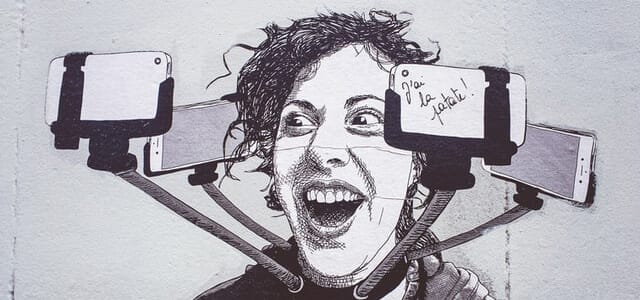

Healthy self-esteem takes responsibility, it disciplines oneself, it accepts that life isn’t meant to be a walk in the park where compliments and praise are dealt out everywhere, but also respects the need for genuine praise too at times.
Those with healthy self-esteem might still get into arguments, sometimes in an understandable need to protect their attacked esteem (although differentiating between that and being defensive due to a bruised ego is important), but with healthy esteem, they will learn how to accept responsibility for their side of an argument, and will likely argue less than those with lower self-confidence.
Why We Need To Refocus What Self Means As Adults
We all crave healthy self-esteem but there’s a key cog in the works that helps bring it about, and that is the word ‘self’.
This means taking responsibility, responsibility to value yourself, standing up for yourself when you start blaming yourself (or start blaming others) and rewarding yourself for effort.
It’s not about ‘loving’ yourself in a way that seeks validation externally. Selfies don’t help you love yourself. They cry out for more validation.
It’s no wonder so many of us seem to seek self-esteem from external validation, especially since our world became so exposed to judgement and social media interaction, but whilst people can build self-esteem through the compliments of others, they can just as easily, if not more so, find that one ‘insult’ will bruise them too.
If you have been brought up and find you have self-esteem issues or inflated ego issues as an adult (which may be blind to you for some time), then when you are constantly exposed every day to more potential judgement or expectation beyond that of your capacity (or capability) each day to take it, then it doesn’t take long to have a breakdown.
Many people have breakdowns. Not in the complete total annihilating mental traumatic sense of a breakdown, but it might be through sudden fights that arise when all seemed to be well underneath moments earlier.
These flashes of anger or hurt expose themselves through the mask that people wear (for much of the rest of the time), but after these flashes often people go back to wearing the mask again instead of seeking to go deeper to solve the issue.
Of course they do, it’s easier than surfacing a potential monster inside. No one in society wants to admit that they might have frailties, especially in such an exposed and socially judging society today, so those frailties just grow and grow, fear ends up preventing change and people become comfortably numb in life wearing masks to keep up appearances whilst firing up on the inside.
Now I don’t mean to say this to sound dramatic, as the reality is there.
It’s Time To Come Out From Behind The Mask
It can feel like external pressure is stronger than the need to raise healthy self-esteem. It’s why people will manipulate to rise up a ladder or say nothing suffering in silence at risk of losing their job.
People have relied on their mask to get them to where they are. It protects them in some way from getting hurt and allows an inflated ego to grow and emulate confidence. In some ways, our fears spur our external success but they also cage our internal soul.
In other words, we become led by the external and hide from the challenge of truly learning to accept and love ourselves.
Thankfully, our modern world is learning and there’s been a lot more exposure to the need for truly loving ourselves, but we need to be clear:
This isn’t all about feeling good, as it takes a lot of effort to expose and then heal from scars. Some people will need therapy, others will need guidance and coaching, most probably will entertain both at some point on their recovery journey.
It takes a big mental shift to move from being driven by the voice of many to being driven by your own voice, and many mistake that with thinking they have to ignore the needs of others along the way.
It’s not about loving yourself to the point where you ignore or blame others. That isn’t taking responsibility or valuing yourself at all, that is still seeking validation and placing emphasis on the external (that’s an identity crisis).
It’s also not about refusing to accept any challenge in life either, whether it be from other people or in different situations. In fact, this is what we need a lot more of in order to develop healthy self-esteem.


When you seek to develop a change in your mindset you will undoubtedly have challenges that you’d previously jump right back to your go-to comfort zone action, be it blame yourself, blame others, deny, hide behind an inflated ego etc, but when you take responsibility for your own challenges you will have to accept that uneasy feeling of being uncomfortable with a new response, but a response that will ultimately allow you to build a much healthier self-esteem.
The Relationship Between Creativity And Developing Healthy Self-Esteem (& Why Creativity Is Often Stifled)
So, here’s where creativity comes in. It’s been waiting to have its word, and it’s actually got a lot to offer.
As mentioned above, we need challenges and new things to explore to grow from to develop healthy self-esteem, but this requires us to challenge our fears and biases that we’ve been hiding behind, and this is where creativity can become our best friend.
You see, when our mind is fluid and creative we can do a LOT more in life as we become much more adaptable people as a result. We develop big-picture visions that help us in our direction. Creativity feeds our ability to be confident, productive and to develop autonomy.
Yet during our childhood development into adulthood, we can see that when creativity was stifled or not explored our self-esteem also tends to diminish.
With no creative ability to freely explore the opposite is to be controlled by fears, and essentially this is what happens to many of us as we develop into adults.
So if you find you have low self-esteem (or exaggerated self-esteem) then chances are your creativity got locked up too much in childhood and was replaced by stifling fears that stopped you from expressing yourself confidently as an adult.
Then as fears take over we tend to undermine the importance of creativity to our healthy development as adults, and mistakenly pass it off as something left for the occasional hobby art class, when in fact its relevance is far more reaching to our overall healthy development.
It’s not uncommon to see our creativity then slowly dissipate as we age from adolescence to middle adulthood until we are left thinking all logically and routinely about everything we do, often led by subconscious fears.
We find our fluid intelligence slowly gets replaced by a more ingrained crystalised intelligence, and now we approach challenges differently too. Instead of utilizing creative thinking, we learn to deal with challenges through ingrained logical patterns.
Our logic tells us to survive by using as little energy as possible. Creativity is used sparingly and usually to serve its master – logic – inventing masks, scripts, and stories to hide behind. Creativity is seen as a time and energy waster unless it’s used to keep us safe, but this very conditioning blinds us to its potential, as when allowed to explore creativity feeds confidence, and confidence allows us to overcome challenges easier.
How Creativity And Healthy Human Development Correlate
To understand this further it’s worth exploring what makes a healthy esteemed individual in the first place, at each stage.
Whilst there are many models to explain human development, I like to use the one by Erik Erikson because it makes the general development easy enough to follow through a life cycle (although by the time we are adults we are dealing with most stages of development simultaneously, rather than it being one after the other).
When going through these stages we can see just how much creativity was required in various stages.
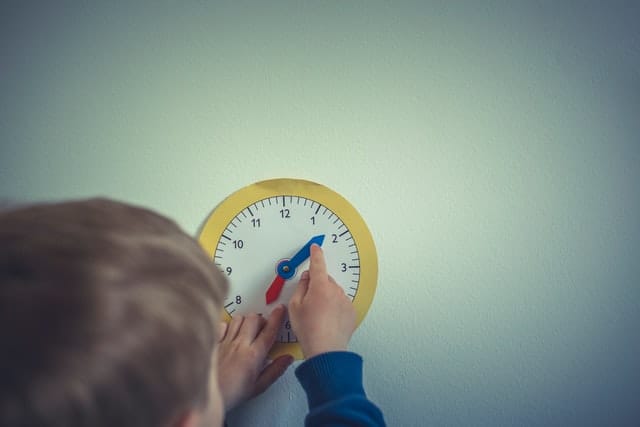

We tend to have very little say in how the initial stages of our development played out.
The first 3 were beginning to be developed before we even started school, so a lot of this was based around how we were parented (although blaming them for our own cards won’t help anyone truly take responsibility for our own self-esteem as an adult).
Trust Vs Mistrust
First of all. Trust versus mistrust.
We learn how to trust those looking after us and this builds our confidence in the world around us. Whilst not directly connected to creativity, it indirectly ensures our mind can develop towards stage 2 healthily, rather than be withdrawn from developing social connections or being intrigued about what all this new stuff around us is (rather than suspicious of it all).
A simple test in this is to smile at a baby. They will likely engage and smile back as they don’t see you as a threat. If you frowned at them then they may start crying, their inbuilt survival response to say ‘help me, I don’t trust this, I need safety’. When they smile they fire many connections around in their mind and open up to accepting this new face, and all that goes with it. How does this help us as adults? Simple. Smiling helps us release endorphins. Had a bad day? Smile about it. Instead of seeking to find something to mask your frustration (like beer, TV, blame gossiping) try simply smiling about it. Learning to laugh with yourself (rather than beat yourself up, laugh at others, or avoid conflict at all) will help your mind fire up endorphins.
These endorphins take our mind away from fearing and stifling solutions to instead seeing something new or different. Like a baby opening up another potential world to explore, we can still do the same as adults.
Autonomy Vs Shame or Doubt
The second stage of human development is all about building autonomy (versus shame or doubt).
This one clearly links towards our creativity, it’s essentially the foundation of it.
When we were allowed to explore our independence (without having our hand held over everything we did, or judged or controlled over everything) then our mind would learn how to create a connection, work something out.
Looking at a ball and learning to kick it rather than being told ‘no it’s not safe’ leads to the development of independence rather than doubt in ourselves.
If we constantly doubt our ability to do something then we don’t fire off connections to learn something new or learn how to become competent at something later. We give up easily, and we find our learning ability is hampered.
This can lead to a lack of creativity to fall back on and use as needed. Creativity links directly to how independent we can be, which then directly affects our self-esteem.
Let’s take an example with travel. Those who have self-doubt are more likely to stay within the same town and familiar territory in life. Those who have developed more creative connections through exploring independence are more likely to overcome doubt but also create new opportunities further afield.
In a world where we are now interconnected and can work and live in much more flexible ways than ever before, having a creative and adaptable mindset is truly important.
We can see the negative effects of being in lockdown during a pandemic can have on us too (despite the pandemic actually also having a few surprising plus points). People lose their independence physically but also in mind, and since then more people have reported suffering from mental health issues since being inside all the time. It’s not just a physical prison but a mental one.
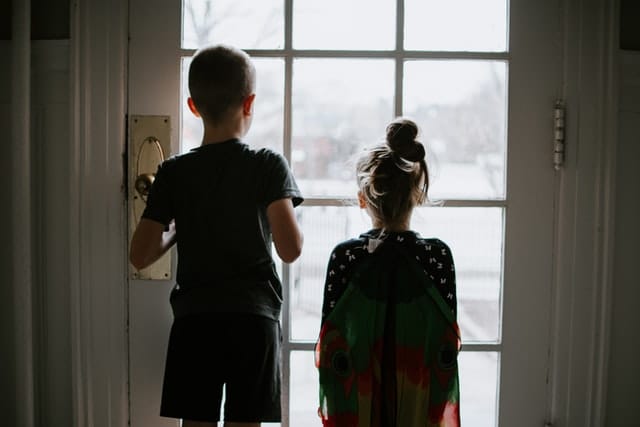

Initiative Vs Guilt
The third stage of development is about initiative versus guilt.
This links closely to the second stage but here a child of pre-school age really needed the space and encouragement to show initiative, rather than be controlled or discouraged for taking the initiative.
Again our creativity plays a huge part, as we have to be creative enough to put two-and-two together about something we didn’t really know too much about at the time to develop an opinion or a sense of right or wrong.
If a child had its toy stolen and told their parents they had it taken, and the response was to not be acknowledged for taking the initiative to tell them, then they may develop a sense of guilt for saying something (like anything they said might be either wrong or put down).
This leads children (and eventually adults) to be very timid and not speak up in fear of being made to feel guilty.
Again this hampers creative development as when we don’t look for something new then our relative connections aren’t opened, and we likely don’t seek to change.
Once we find a comfort zone (even if numbing) we don’t get away from it due to fear of what others might say or think.
We end up losing a lot of energy thinking of all that could happen (but which in reality doesn’t) and then develop a negative connotation with our creativity and with progress.
Creativity is then seen as a sap to our required energy for daily function. We feel guilty for thinking creatively or out of the box. We end up playing it much safer in life and feel unfulfilled in later stages too.
So, how to counteract stages 2 and 3 today?
It does depend on how deep your scaring might be (possibly deeper than you may initially think), but the absolute requirement to build up autonomy and initiative again, to get your brain firing, is to give something new or different a try, even if you feel shame or guilt doing it. When low self-esteem is coupled with a high expectation level set upon you early in life (think of a father who constantly says you should be a millionaire by 30 or a pro golfer etc) then your self worth might become even lower because even if you did achieve something decent for the beginner you would be at such a young age, you still feel it’s not enough, so you still feel judgement, shame, guilt. It’s a vicious cycle. Therefore, set the expectation low. You compare yourself against yourself from yesterday, not against others. A creative task is particularly useful because it will automatically get your mind thinking of something different to a set pattern or routine, which frees up the potential for you to not feel automatic shame or guilt for doing something. When you try something new, whether it be 5 press-ups or writing down a fear in a journal, praise yourself for it.
Of course, the goal is to get to a point where we can set our own higher expectations, but they have to be free from fear or from external expectations (or we have to develop further still and learn how to be anti-fragile and become better under pressure).
But for now, we need to realign our creative self to be able to try new things (or the same things again just with a different mindset, one that says well done for the effort, a lot).
Generally, our creativity becomes squashed by the time we become fully-fledged adults because most of us have had too many opposing lessons telling us to be safe and logical, to do something to fit into society safely, and to forget about the cost it might have on our own self-esteem or creativity.
It’s time we reversed that.
Industry Vs Inferiority
To think that all of this happened before we even got to school, and then along comes school and potentially squashes our creative thinking even more.
Stage 4 development is where we begin to compete with others. If others are gaining more praise and attention or showing more competence then it can make us feel inferior, rather than industrious.
An industrious person is a self-starter. Likely the ones who had healthy stage 4’s started developing a bit of an ego where they felt accomplished and competent.
This is healthy at first, but which then may spiral into egotism because it leads to a need for more attention and constant affirmation and acclaim, where they derive their confidence from the approval of others rather than from their own self appraise.
How does stage 4 relate to creativity?
If you develop a feeling of inferiority or incompetence you’ll likely explore your mind less, accept your fate, and become withdrawn in society (which leads to problems in stage 5 onwards too).
Considering later stages are stages we are still experiencing fairly freshly in our adult lives it then becomes incredibly important to address stage 4 and start building our self-esteem and the resulting creativity it will help manifest (rather than squash).
It’s all about industry, which again involves action. Creating doesn’t happen unless we act. We can create in our mind, sure, but when we start to implement what we think the effect on our overall psyche is a lot bigger.
Often it’s a well-ingrained fear that stops us from doing something (even something we might like). You might like to be in a band or make a podcast, for example, but you don’t let yourself do it because maybe you had a memory of rejection or were told so much that you have to do something more serious or proper in life.
The potential drain on energy here is huge. Imagine looking at a pile of papers that you keep putting off. You build it into a huge and stifling task, but if you were to just look at the first sentence of the first paper for a few minutes that would get the ball rolling, and the resulting weight lifted would be huge.
It can often be well-intentioned parents who want the best for you who can actually stifle your progress or beliefs, or it could be the school and societal system that got you either competing against each other too much or made you share too much.
Either way, we all as adults have to take responsibility for the cards we’ve been dealt, and there’s a quick industry-building tactic you can use.
Think of something you’d like to do or achieve in life. Then think about why you aren’t doing it. What fear seems to come up and tell you that you can’t? Do you feel like you aren’t good enough? Are you worried about the cost? The time? Whatever it is, accept the fear, but do it anyway, just a little. Let’s say you want to have a strong body but you don’t think you can be committed or disciplined enough to do it, or you aren’t really truly motivated because deep down you know you only want to look good because it will get attention from others rather than be about your own healthily self-esteem. Either way, acknowledge the nagging voice. Then tell the nagging voice. ‘It’s okay, we are doing it for us. I believe in us.’
You see, we all have this lost child within, and that child is very creative but is waiting for approval from an adult. Approval that it never really got.
We grew up to just accept our fate, to mask ourselves to it, but the child within didn’t. They are still swimming around our subconscious dreams waiting to get out and play, to be guided.
It’s not that we can’t be industrious, all of us can be, but we have to be that responsible adult who is telling the child within that ‘it’s okay to do it now. You know why? Because I’ve got your back.’
That child will be a little reluctant at first but keep telling it. Build your inner child’s self-esteem first and you’ll be amazed at how much stored energy has been waiting within you underneath. That child will have your back in many ways too as you are two of the same.
The same goes for all the stages, but praise around this stage is particularly important as inferiority to others will only see us withdraw further and further into ourselves, so we have to lure that child out from deep within.
Again, some people may need counseling or a coach for this, but others might be able to start with themselves today, to set a simple goal to achieve by the end of the day and to keep backing yourself and your child within throughout, even when the inevitable doubt, guilt or fear comes up.
Identity Vs Role Confusion (& Intimacy Vs Isolation)
Creativity is abundance. We can always create more. Our minds remain placid through our lives all the way up to old age.
It’s our special superpower and we would be wise to bring it out in positive and productive ways.
As we learned to socialise more and tried to find our way in the world we often forgot about this superpower. We instead became desperate for the approval of others.
We went through stage 5 (identity versus role confusion) and stage 6 (intimacy versus isolation).
From the ages of 15-40 (roughly) much of our life is about building ourselves externally, so little energy is given to our internal self-esteem.
Yet, for us to be able to find our own identity we have to be able to create it, but many of us fall to societal and peer pressures instead, afraid to think for ourselves and more likely to follow the leader or even the bully.
It might be hard to admit today for some, but many who have an inflated ego aren’t really as free in their own mind or identity as they may posture or present.
There are many celebrities that people look up to who might be very industrious but are seeking further and further approval of external admiration. Enough is never enough, and it’s because what they are really seeking isn’t found on the outside, it’s found within.
Identity is where self-love really manifests further, but in adolescence, we don’t really know ourselves at all. We end up becoming a product of our environment, and we fit into the biases and ideals of our surrounding group.


Instead of developing a healthy dose of self-love we can become confused with validation and love, and as validation is much easier to come by when fishing for it many people become addicted to it to feel good about themselves, rather than truly feeling good about themselves and the person (identity) they are.
Creativity is important here because as adults we can’t change the past but we can learn to reinvent ourselves towards someone we feel good about.
This is different from always feeling good. We shouldn’t aspire to that impossible expectation, but we can feel good about the person we are, and the person we want to be.
It’s about creating our own deserved character that aligns with our goals, aspirations, and values (and not the ones we ended up following or vicariously living through for the sake of fitting in or for societal survival).
If we haven’t developed a strong self-identity then we will be forever running around trying to be everything to everybody (and our tech-fueled social media world today sends this exact damaging message to us, as we spend far too much energy thinking we have to be as good as this person, that person etc.).
We can’t be anyone else and not should we want to. We can’t be 10 people, but we can be a very good person.
We run the risk of blinding ourselves to our true worth or talents when we focus too much on what Mr and Mrs Jones are up to.
It’s understandable that we want to be seen as good in the eyes of others, as we do want to find those few people in our lives that we truly care about the most, and they care about us, otherwise, we find ourselves in a state of isolation, but when we focus on creating our core values we will find that people gravitate to that a lot more than they do to someone pretending to be someone they are not.
Generativity Vs Stagnation
By the time we hit stage 7 we have a conscious fight between generativity versus stagnation, but this fight will only continue too unless we stop seeking to find outside approval for everything.
It’s good to have goals and ambitions, to have things you want to achieve in life, but we have to do it from our core values inside, and for this to truly manifest then we have to allow ourselves to come from a place of strong self-worth (not externally led egotism).
We can’t be creative from the outside. We can find inspiration and stimulus, sure, but we create from the inside.
If we don’t have a strong internal compass guiding us then we wouldn’t be able to bring out that bundle of creativity ready and waiting through the child within.
We need to utilize that creativity if we want to live the remainder of our life directed from internal values and to be able to envision and craft a life that we can begin to confidently put into action.
Then once we’ve aligned our vision with our core values then we will find that creativity is multiplied when it’s allowed to thrive.
The generativity stage then becomes a very productive phase that can last also through to the latter stage of life, integrity versus despair, where we can look back in life and feel satisfied and accomplished with what we have done, because we’ve managed to take the cards we’ve been dealt and turn them into a winning hand.
If you found this article helped you, or think could help someone else, then please bookmark it or share it with someone who it may inspire to create change. I work hard on creating these lengthy articles and often publish them for free so I’d be grateful if you’d pass it forward. You can find more content around developing a creative, adaptable, and forward-thinking life and mind on Richly Wills. Thanks and have a great, creative day!




